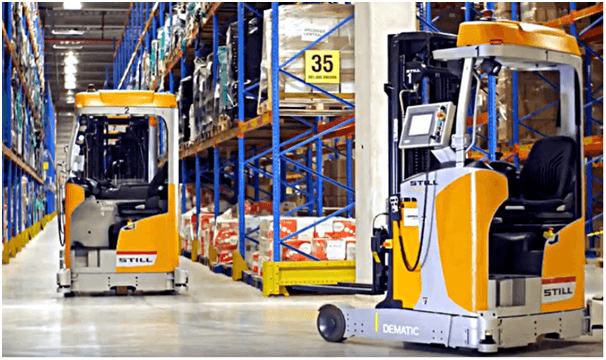Procurement plays an essential role in acquiring goods and services from preferred suppliers with a cost-effective process. The procedures vary as the procurement cycle’s primary consideration includes delivery time frames, product quality, and profit margins. However, cost, quality and on-time delivery are the more dominant attributes of procurement performance evaluation. This article discusses the major procurement considerations in this industry. It could greatly benefit the kitchenware industry to make the correct business decision via these avenues by carrying out strategic Sourcing, analyzing sales trends, having the right price benchmarking, and ensuring the quality checks are being carried out.
Table of Contents
Strategic Sourcing
The key components in any strategic sourcing are to strengthen the spending analysis, supplier management, supplier evaluation and detailed market research. It refers to identifying the spend profile and supplier base to ensure the business requirements align with the suppliers. It aims to achieve the lowest total cost of ownership and minimal of supply chain risk. Hence, it embodies the business relationship with its sourcing partners as a loop that developed periodically instead of a one-way process. A higher level of cost savings is the most apparent benefit from strategic sourcing. Identifying the suppliers that provide the highest value at the proper pricing enables higher cost savings.
In order to enhance effectiveness and competitiveness, it is imperative to select and maintain competent suppliers. Many factors affect the selection of suppliers, including cost/price of goods and services, quality assessment, reliable delivery times, financial position, logistic and technological capability, trust and commitment, etc. Sustaining the relationship with suppliers also imply that the suppliers feel valued and motivated to optimize their performance to meet the business objectives.

Price Benchmarking and Quality Management
Price benchmarking is defined as a fundamental activity in any procurement process. It is a form to compare the cost for goods and services with other suppliers on a like for like basis. Either it is a one-off price comparison or ongoing exercises regularly, it allows the purchasing team to make purchasing decisions in reasons and wisely. It is to ensure the company is getting a reasonable price on the goods and services. Also, it is real-time feedback about the market prices and trends. Developing and implementing these processes help to add value and have an optimal return of investment.
Quality Management helps to improve the quality of goods and services while reducing the cost. It aims to minimizing the quality issues and increasing the customer satisfaction. They are identifying the defects and scrap to meet the requirements and specifications. For instance, if there are any defects in the raw materials purchased, quality issues will be arisen in the finished products. In addition, it will make the entire production process inefficient, increasing defect rates and costs due to machining or refining. Implementing stringent quality control will immensely benefit and reduces the wastage being put up from various sources. Moreover, the number of defective products is sieved out, increasing the consumers’ brand confidence and reducing the wastage.

Procurement Data Analysis
Data analysis equips procurement with more detailed and real-time information. It allows making more intelligent and accurate spending decisions, developing more robust procurement strategies and managing suppliers. Access to historical and real-time data helps measure the customers’ satisfaction levels, lead time, cash flow, and costs against the product. Also, it helps to understand the risk associated with depending on a particular supplier. It can also alter negotiations frequency and evaluate the supply and demand is likely to change, thus minimizing the procurement risk.Data analysis creates the ability to be predictive rather than reactive. For example, building up the historical data can predict the demand and ensure the right resources are sourced based on the quality, price, and supply as required. As a result, it increases the efficacy in any business decision process.
Maximizing Cash Flow from Procurement
The Importance of cash flow generates largely depends on Sourcing and inventory management. Having a healthy cash flow means the ability to turn around the rate of inventory. It allows the company to have greater buying power and realize advanced growth opportunities by optimizing procurement processes and inventory control management by maximizing cash flow and reducing inventory holding costs. Selecting the right supplier can have a significant impact on cash flow.
Sourcing for the best deal from different resources to ensure the correct item at its right price is procured with the low pricing at the right time and suitable supply. For instance, minimum and maximum order quantities may save costs, but it requires a more significant cash-out and risk of carrying excess inventory. It is an effective way to maximize the cash flow by negotiating for a credit term or requesting extend trade credit instead of paying the suppliers in advance or cash on delivery. In addition, it allows having more working capital to cover operating costs. Inventory equates to assets, it is essential to achieve the decent levels of inventory holding so that to maximize the cash flow. In addition, effective inventory control balances the stock levels, reduces waste, and minimizes the risk of inventory damage and obsolete.

Logistics and Turnaround Time
Logistics management manages, coordinates, and monitors resources to move the goods and services smoothly, timely, reliable, and cost-effective. It involves the planning, movement and management of goods and services from origin to consumption. Cost-saving through reducing warehousing cost, procurement based on forecasts, inventory management, reliable shipping and timely delivery to the consumers. It helps to understand the key metrics, core processes and long-term goals so that to get the suitable item to the right place at the right time.
Turnaround time means the total time the goods and services to be delivered to the customer through all stages of production since the order is received. This info helps to analyze and determine the procurement at the right time without causing a lack or excess of inventory.

For instance, receive the material earlier than expected, which must be stored in stock. The inventory holding cost may increase as the inputs may take up the warehouse storage and disrupt other processes. An additional cost of damages may increase too if the items are perishable or toxic. Therefore, the more accurate information and control in procurement, the better the lead time and process definition. The operation flow will then be more smooth.
Conclusion
This article highlights the primary considerations from a procurement perspective of the kitchenware industry. The importance of these considerations would mean having a well-defined procurement process. In return, the actual benefits from these considerations significantly reduce the costs across the supply chain. It would also lead to greater efficiency in delivering quality goods and services and promoting product innovation. Another benefit is reducing the risk from suppliers and having a flexible supply chain to stretch one’s cash flow. In conclusion, these considerations are vital, be it in the kitchenware industry or any industry. Understanding them would ideally be vital and beneficial to any establishment in making any crucial business decision as they pivot in this day and era.
References
James Diaz. (2020). “Why is Quality Control Important in Supply Chain Management”. Retrieved from https://medium.com/procurement-and-sourcing-hub/why-is-quality-control-important-in-supply-chain-management-7f42698baba, accessed on 18/09/2021.
Jolynn Chong Chew Lan, GDSCM. (2020). “Big Data Analytics for the Healthcare Supply Chain”. Retrieved from https://publication.sipmm.edu.sg/big-data-analytics-healthcare-supply-chain/, accessed on 18/09/2021.
Melanie Chan. (2020). “Here’s How to Maximise Cashflow with Better Procurement Processes”. Retrieved from https://www.unleashedsoftware.com/blog/heres-how-to-maximise-cashflow-with-better-procurement-processes, accessed on 18/09/2021.
Mercado Eletrônico. (2019). “What is lead time in procurement and how important is it?” Retrieved from https://blog.me.com.br/en/english-what-is-lead-time-in-procurement-and-how-important-is-it/, accessed on 18/09/2021.
Michigan State University Online. (2021). “Why Logistics is Fundamental to Supply Chain Success”, Retrieved from https://www.michiganstateuniversityonline.com/resources/supply-chain/logistics-fundamental-to-supply-chain-success/, accessed on 18/09/2021.
Winnie Soh Pin Pin, DPSM. (2019). “5 Essential Technologies for Inventory Control in a Warehouse Contract”. Retrieved from SIPMM: https://publication.sipmm.edu.sg/five-essential-technologies-inventory-control-warehouse-contract , accessed on 18/09/2021.
Wong Kok Wai, DPSM. (2018). “Importance of Strategic Sourcing Skill for Effective Procurement”. Retrieved from https://publication.sipmm.edu.sg/importance-strategic-sourcing-skill-effective-procurement/, accessed on 18/09/2021.

